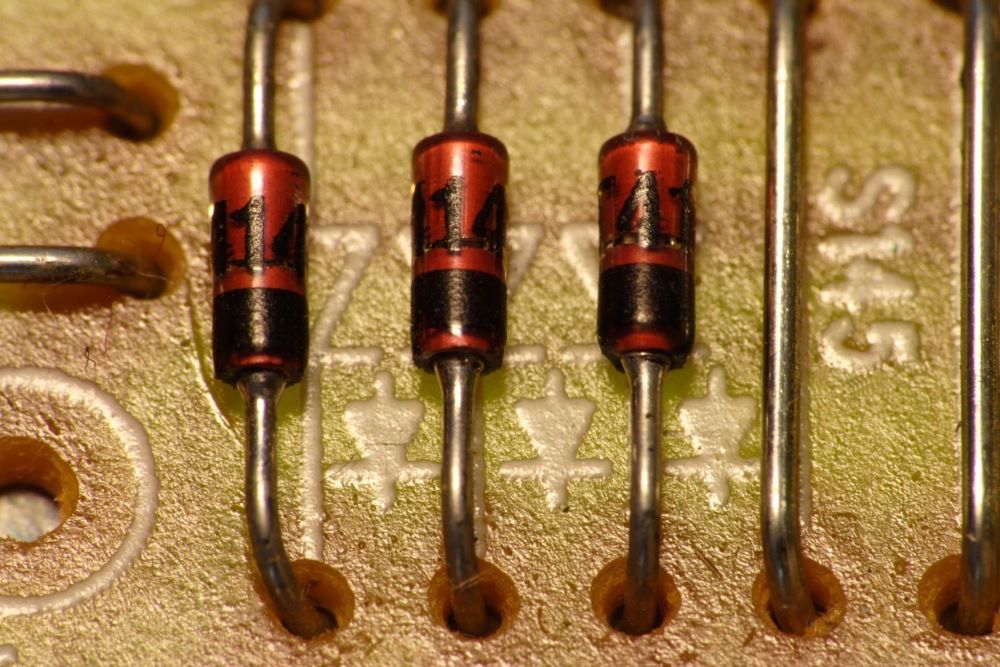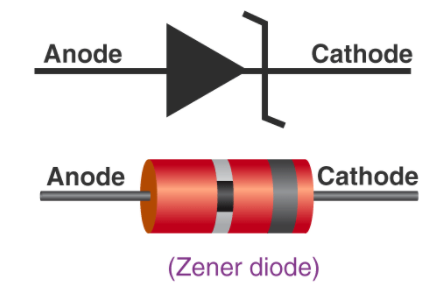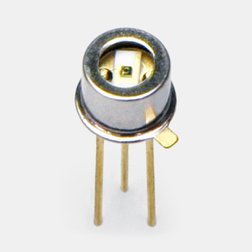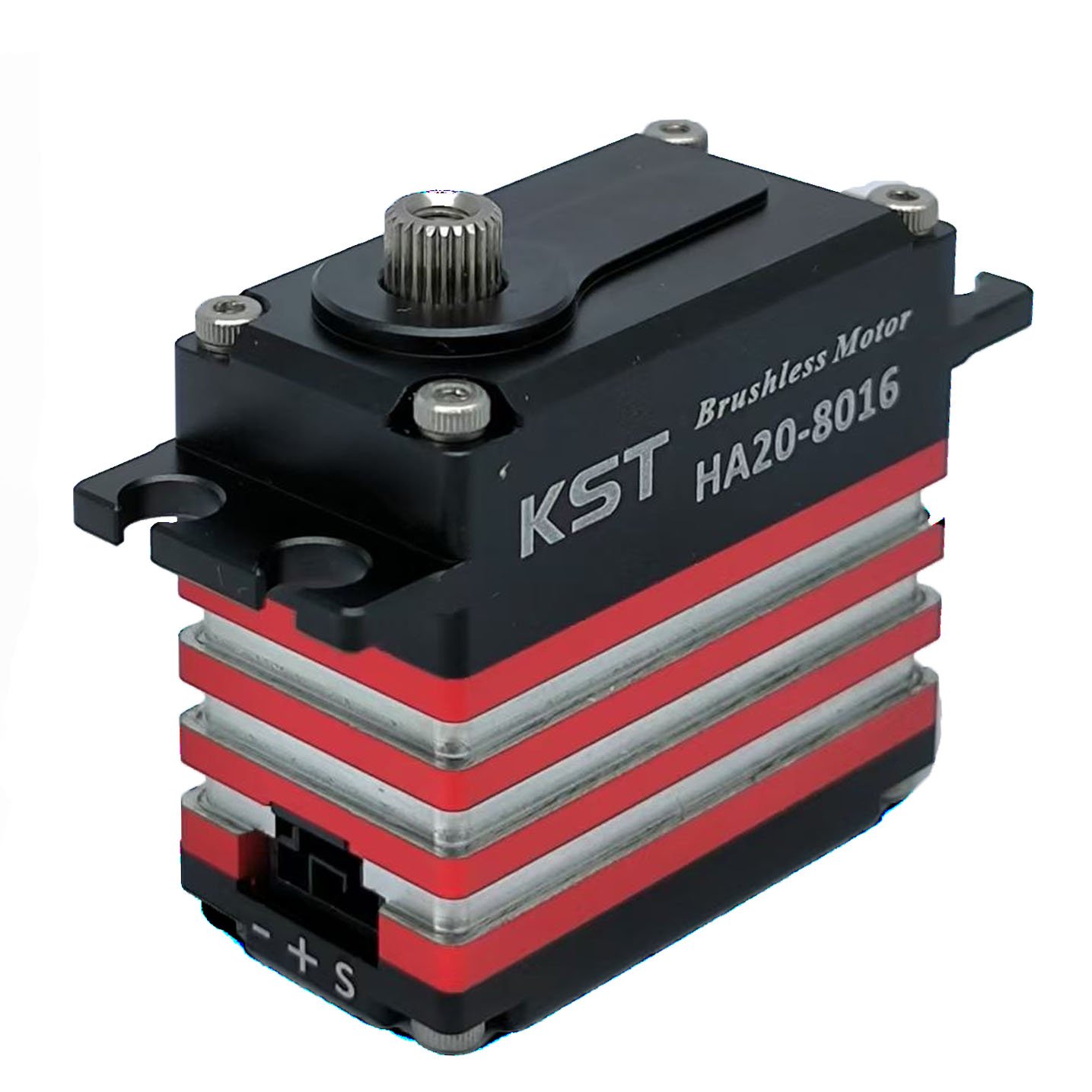A Zener diode (English: Zener diode) is an electronic device made using the Zener effect of a diode under reverse bias. Because of its voltage stabilization function, it is also called a “regulator diode” (English: regulator diode). Its working principle is based on the reverse breakdown effect, that is, under a specific reverse voltage, it will suddenly turn on and stabilize the current at a relatively constant value. This characteristic makes the Zener diode very useful in circuits that require a stable reverse voltage, such as a voltage regulator or overvoltage protection device.

Zener diode function:
The current flowing through the terminals in a reverse biased (reverse) manner is called the Zener effect. This results in a Zener voltage (Vz)/breakdown voltage when the voltage potential is met. The Zener diode uniquely consists of a heavily doped P-N junction that allows current to flow in the reverse direction when the current reaches Vz. A well-defined Vz allows continuous reverse biased conduction of current without damage. The current then increases to a maximum level determined by the series resistor and remains stable, remaining constant within the applied voltage range. Therefore, the Zener diode can be used as a voltage regulator.
The Zener diode operates in the normal range of forward bias with a turn-on voltage between 0.3V and 0.7V. When connected in a reverse biased manner, the current flows backwards, resulting in a small current leakage. When the reverse voltage is increased to the Vz of the arrangement, the current flows through the entire diode. The current increases to a maximum value determined by the series resistor and then remains stable to remain constant within the applied voltage range.
The Zener diode has two breakdown effects. Understanding these two effects helps understand their function. The first is the Zener effect, which is prevalent in voltages below 5.5V and involves tunneling leading to breakdown. The second is avalanche breakdown or impact ionization, which occurs at voltages above 5.5V. These faults all result in the same behavior, and they do not require different circuits, but each has a different temperature coefficient. The Zener effect has an anode (negative) end temperature coefficient, while the avalanche has a cathode (positive) end temperature coefficient. The two temperature effects are almost equal to 5.5V. They cancel each other out, making the Zener diode rated at about 5.5V and stable over a wide range of temperature requirements. Think of the Zener diode as two diodes in parallel, facing opposite directions. The voltage in the forward bias of a Zener diode has a voltage drop of 1V, and the diode needs 1V to conduct current. The forward voltage is forward biased. The current flowing backward is considered the Zener voltage, or reverse biased due to its characteristics. An example of a Zener voltage is 3.3V. In order for current to flow through the diode, the current must remain at least the minimum value of this voltage. Having a predictable voltage drop allows a Zener diode to be used not only as a voltage regulator, but a properly set Zener diode can limit the voltage of other devices.

Common Zener Diode Specifications:
- Current Iz (Maximum):Maximum current under rated Zener voltage (Vz – from 200μA to 200A).
- Current Iz (Minimum):Minimum current required for diode breakdown.
- Forward Bias:Voltage passing through the diode allowing current to flow easily in one direction.
- Rated Power:Maximum power dissipation the Zener diode can handle, product of diode voltage and current passing through it.
- Reverse Bias / Zener Effect:Voltage passing through the diode in the opposite direction to forward bias, at which specific voltage will not cause any detectable current flow, converting AC current to direct current and manipulating other electronic signals.
- Temperature Stability:Diodes around 5V have optimal stability.
- Voltage Tolerance:Typically ±5%.
- Zener / Breakdown Voltage (Vz):Minimum voltage at which part of the insulator breaks down and becomes conductive. Voltage ranges from 2.4V to 200V, with some reaching up to 1kV, and surface-mount devices maxing out at 47V.
- Zener Resistance (Rz):Resistance exhibited by the Zener diode.
Key Terms:
- Avalanche Breakdown:Occurs when high reverse bias voltage increases the electric field and further widens the depletion region.
- Diode:A two-terminal electronic component that conducts current in one asymmetric direction with a low resistance and infinite high resistance in another direction.
- Doping:Process of adding small amounts of chemical elements with impurities to change the conductivity of a semiconductor.
- Electrical Breakdown:Process where insulating electrical material exposed to high voltage becomes conductive and allows current to flow. Also known as dielectric breakdown.
- Impact Ionization:Process where a high-energy charge carrier in a material can lose energy by generating other charge carriers.
- PN Junction:Boundary or interface between two types of semiconductor materials, p-type (positive pole) and n-type (negative pole), located within a semiconductor crystal. “P” side contains an excess of holes while “n” side contains an excess of electrons.
- Semiconductor:Material whose electrical conductivity value lies between a conductor (like copper) and an insulator (like glass).
- Tunneling:Purely quantum mechanical process where microscopic particles can penetrate barriers even when the energy of the incident particle is lower than the height of the barrier.
Main Abbreviations:
- A:Anode is positive current.
- IF:Intermediate Frequency.
- IR:Maximum reverse voltage.
- IZ:C-emergency carry capacity.
- K:Cathode is negative current.
- kV:Kilovolt is unit of potential.
- R:
- V:Volt is unit of potential.
- Vf:Maximum forward voltage.
- VR:Maximum DC reverse voltage.
- Vz:Zener voltage.
- μ:Prefix for Micro.
- μA:Microampere is unit of current, equal to one millionth of an ampere.
Examples and Applications of Zener Diodes:
- Surge Suppressor:Electrical device, also known as surge protector, used to protect equipment from power surges and voltage spikes while preventing voltage from exceeding a safe threshold of about 120V.
- Switch Signal:Output signal switch device (or OSSD) is an electronic device in machine safety systems that provides encoded signals when interrupted due to a safety event that signals the machine to shut down. This helps prevent stray signals when operating machines under unsafe conditions.
- Voltage Reference:Electrical device that generates a fixed (constant) voltage regardless of load on the device, power supply variations, temperature changes, and passage of time.
- Voltage Regulator:When load voltage equals the Zener voltage of the diode, a series resistor limits current through the diode. When the diode is conducting, this is used to regulate voltage. The diode produces noise, which can be suppressed by adding a large decoupling capacitor across the diode.
- Voltage Converter:When applied to a circuit with a resistor, the Zener diode acts as a voltage converter. The circuit reduces output voltage equal to the Zener voltage of the diode.
- Waveform Clipper:Reshapes signals and prevents voltage spikes from affecting circuits connected to the power supply.
Application examples using Zener diodes includes voltage reference devices such as smartphones and digital multimeters, as well as power boards serving as surge suppressors. Electronic circuit boards incorporate Zener diodes to convert voltage, act as waveform clippers, and switch signals in various devices involving Bluetooth technology, televisions, and radio wave transmitters.
In summary: Several prominent manufacturers of Zener diodes include Nexperia, Vishay, ROHM, and Toshiba. These manufacturers produce Zener diodes for a variety of electronic components, specifically catering to consumer electronics, automotive, telecommunications, computing, industrial sectors, among others. Zener diodes are compact components that play a crucial role in devices serving industry professioemi-ic.comhttps://emi-ic.com/nals and everyday consumers alike, and they are expected to continue doing so in the coming years.
For more information, please feel free to contact us anytime! Our website: emi-ic.com
























